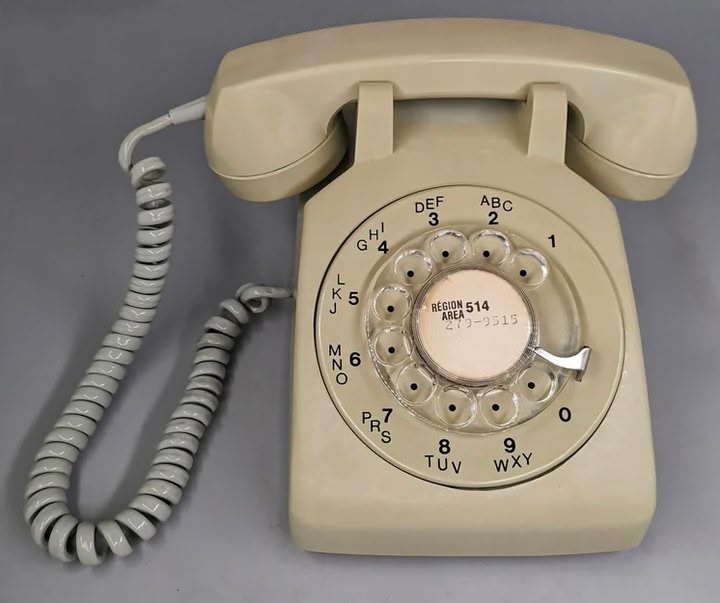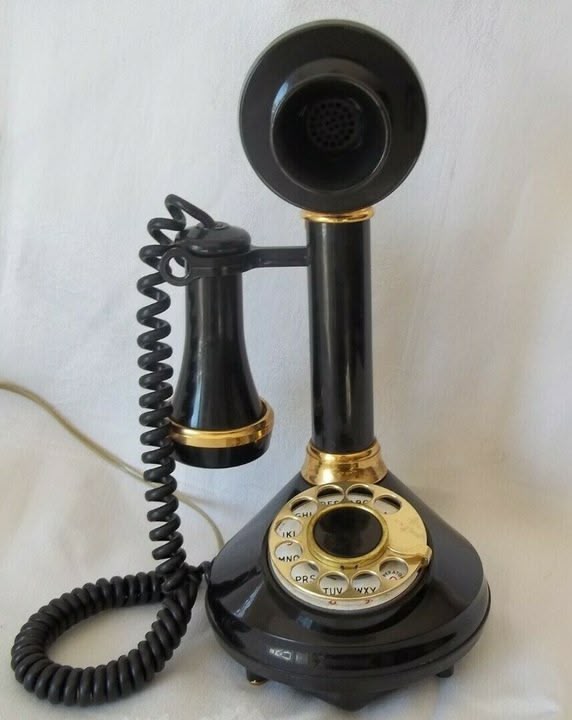ImperialAerosolKidFromEP · 51-55, M
You know that rotaries are no longer going to be supported? If you have VoIP then the right ATA could still support it (until they don't)
Redbeard · 56-60, M
@ImperialAerosolKidFromEP Once the fiberoptics lines are completed that will be true. The only thing slowing them up are the railroads.
zonavar68 · 56-60, M
We were forced to give up normal phones here some years ago, but we don't have fibre optic lines to every premises. We still have copper for the 'last mile' .
ArishMell · 70-79, M
@zonavar68 "Normal" 'phones?
My service was like that until only a couple of months ago, when the last link to the house became fibre. I was supplied with a new router but the 'phone itself continues to work as it always did. It is a push-button one so solid-state electronic, but probably over fifteen years old, possibly >20.
My service was like that until only a couple of months ago, when the last link to the house became fibre. I was supplied with a new router but the 'phone itself continues to work as it always did. It is a push-button one so solid-state electronic, but probably over fifteen years old, possibly >20.
ArishMell · 70-79, M
I am trying to remember when they started to be replaced by push-button 'phones.
Was it in the 1980s or 90s, as electronic telephone exchanges replaced the electro-mechanical Strowger switching that had already long replaced manual exchanges? (The move to electronic exchange circuits was already underway in the early-1970s.)
The Post Office Telephones, as what became British Telecommunications / British Telecomm / BT, was, introduced a version called the "Trimphone" in the late-1960s. This as a dial telephone with a sleek, streamlined case, and luminous dial. Later versions had push-buttons instead. It used an electronic warble tone rather than pair of bells struck by a central, vibrating hammer; but still giving the distinctive double-burst "ringing".
The luminosity was by a low-level radioactive element, tritium; eventually abandoned over safety concerns.
Was it in the 1980s or 90s, as electronic telephone exchanges replaced the electro-mechanical Strowger switching that had already long replaced manual exchanges? (The move to electronic exchange circuits was already underway in the early-1970s.)
The Post Office Telephones, as what became British Telecommunications / British Telecomm / BT, was, introduced a version called the "Trimphone" in the late-1960s. This as a dial telephone with a sleek, streamlined case, and luminous dial. Later versions had push-buttons instead. It used an electronic warble tone rather than pair of bells struck by a central, vibrating hammer; but still giving the distinctive double-burst "ringing".
The luminosity was by a low-level radioactive element, tritium; eventually abandoned over safety concerns.
Sidewinder · 36-40, M
Bri89 · 36-40, M
I wish I were alive when they still used rotary dial phones. I always joked about using one in place of my current phone, but in this day and age, it's not possible. There are too many scam calls to be wary of.
ArishMell · 70-79, M
@Bri89 The type of 'phone makes no difference to the scam attempts.
There may be more such calls now, but there were plenty of criminal attempts about decades ago, too. They differed in style and method, that's all. Many were cold-calling sales of which some may have been genuine, but others were attempts to sell rubbish or non-existent goods or services.
There were also many postal attempts such as the "Nigerian Prince", trying to find a money-launderer or your bank details .
There may be more such calls now, but there were plenty of criminal attempts about decades ago, too. They differed in style and method, that's all. Many were cold-calling sales of which some may have been genuine, but others were attempts to sell rubbish or non-existent goods or services.
There were also many postal attempts such as the "Nigerian Prince", trying to find a money-launderer or your bank details .
OldBrit · 61-69, M
We only got our first phone when I was about 18.
That was rotary dial.
We had push button when we first married in 85
That was rotary dial.
We had push button when we first married in 85
HumanEarth · F
We still have a rotary phone in use. But can't call out, I need a touch tone phone for that
Highskirt · 56-60, M
We had a rotary phone. I was jealous of our neighbour as they had one of the first push button models
Sayana · 22-25, F
I had it in my aunt's home 🐉
RedBaron · M
It’s not really that unfortunate. People used to travel using horses as well, but then came the internal combustion engine.
Innovation and change aren’t terrible things.
Innovation and change aren’t terrible things.
No but I remembered that time I shut the system off previously
DeWayfarer · 61-69, M
Here's your answer...
https://www.amazon.com/s?k=pulse+tone+converter&adgrpid=1338106228880487&hvadid=83631981542825&hvbmt=bp&hvdev=m&hvlocphy=79539&hvnetw=o&hvqmt=p&hvtargid=kwd-83632008472313%3Aloc-190&hydadcr=11122_13563313&mcid=3085a8dc39c7391da4244ce68488cdb9&msclkid=a4809d459e031e9f1b02f50a0cd3f132&tag=hydusmmsn-20&ref=pd_sl_e0ws6oiw1_p
https://www.amazon.com/s?k=pulse+tone+converter&adgrpid=1338106228880487&hvadid=83631981542825&hvbmt=bp&hvdev=m&hvlocphy=79539&hvnetw=o&hvqmt=p&hvtargid=kwd-83632008472313%3Aloc-190&hydadcr=11122_13563313&mcid=3085a8dc39c7391da4244ce68488cdb9&msclkid=a4809d459e031e9f1b02f50a0cd3f132&tag=hydusmmsn-20&ref=pd_sl_e0ws6oiw1_p
A pulse to tone converter is a device that allows vintage rotary dial phones to work with modern phone systems by converting the electrical pulses generated by the rotary dial into DTMF tones used by contemporary telephones. This enables users to make calls using their old rotary phones on digital or VoIP services.
WhataHotBodyCanDo · 46-50, F
Good 'ol days. 🙃
TheOneyouwerewarnedabout · 46-50, MVIP
youre old enough to remember smoke signals :)
just kidding..
just kidding..
And there goes digital fakery



















